
How to Use ZMPT101B: Examples, Pinouts, and Specs
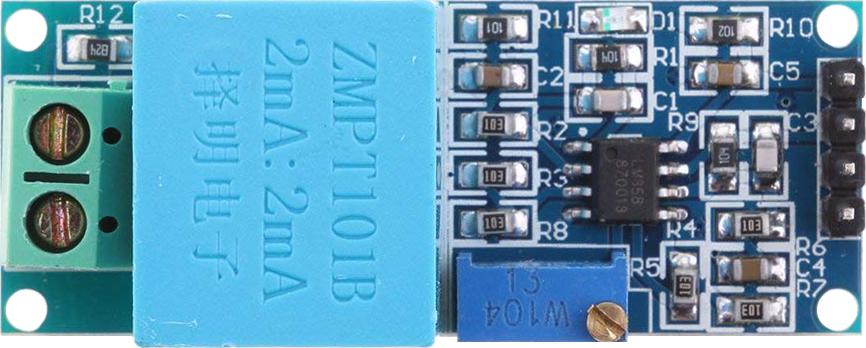
 Design with ZMPT101B in Cirkit Designer
Design with ZMPT101B in Cirkit DesignerIntroduction
The ZMPT101B is a precision voltage sensor module designed for measuring AC voltage. It features a high-precision voltage transformer and an operational amplifier circuit for accurate and stable voltage measurement. The module provides an isolated output proportional to the input voltage, making it ideal for applications in power monitoring, energy management systems, and other AC voltage measurement tasks.
Explore Projects Built with ZMPT101B
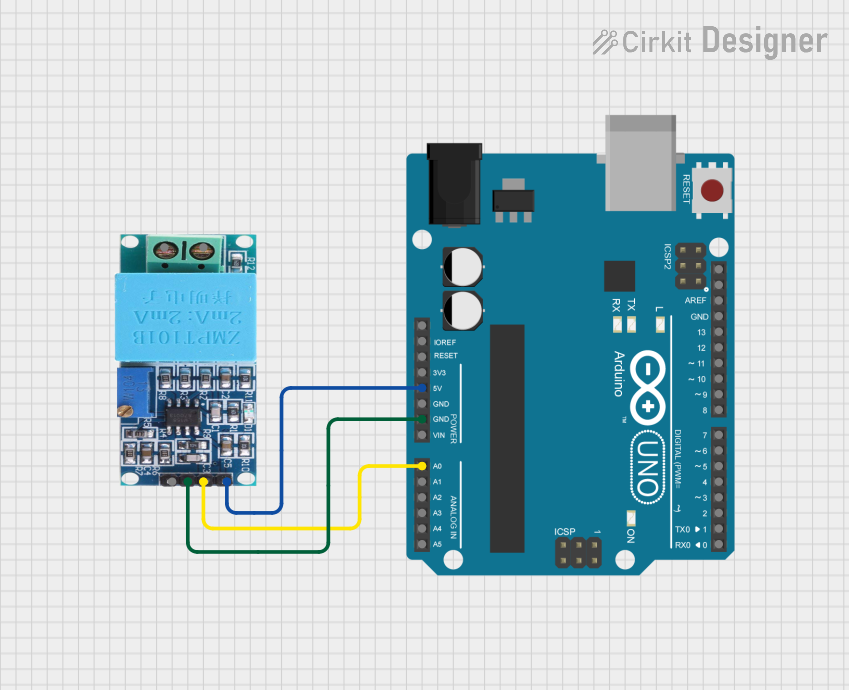
 Open Project in Cirkit Designer
Open Project in Cirkit Designer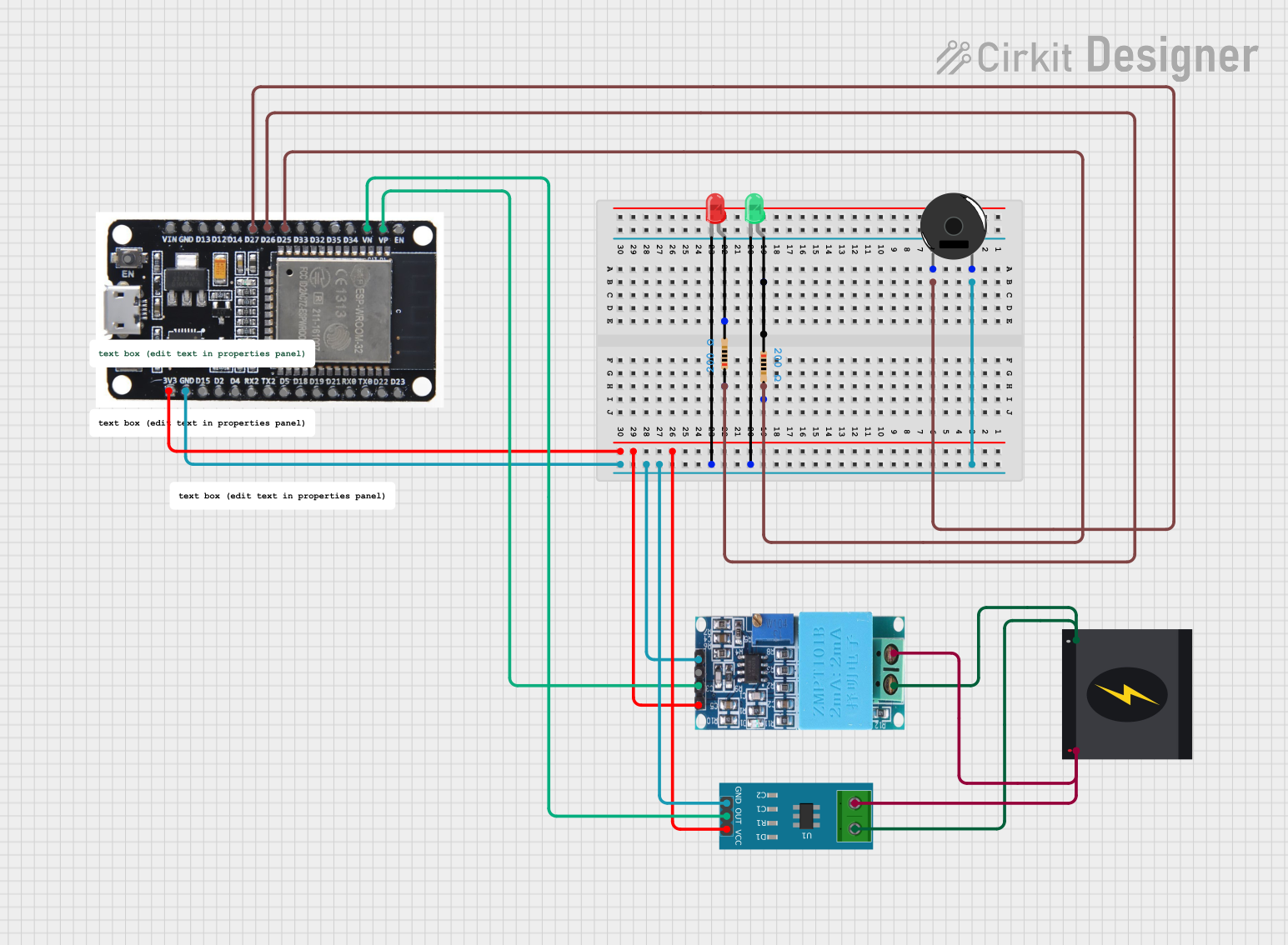
 Open Project in Cirkit Designer
Open Project in Cirkit Designer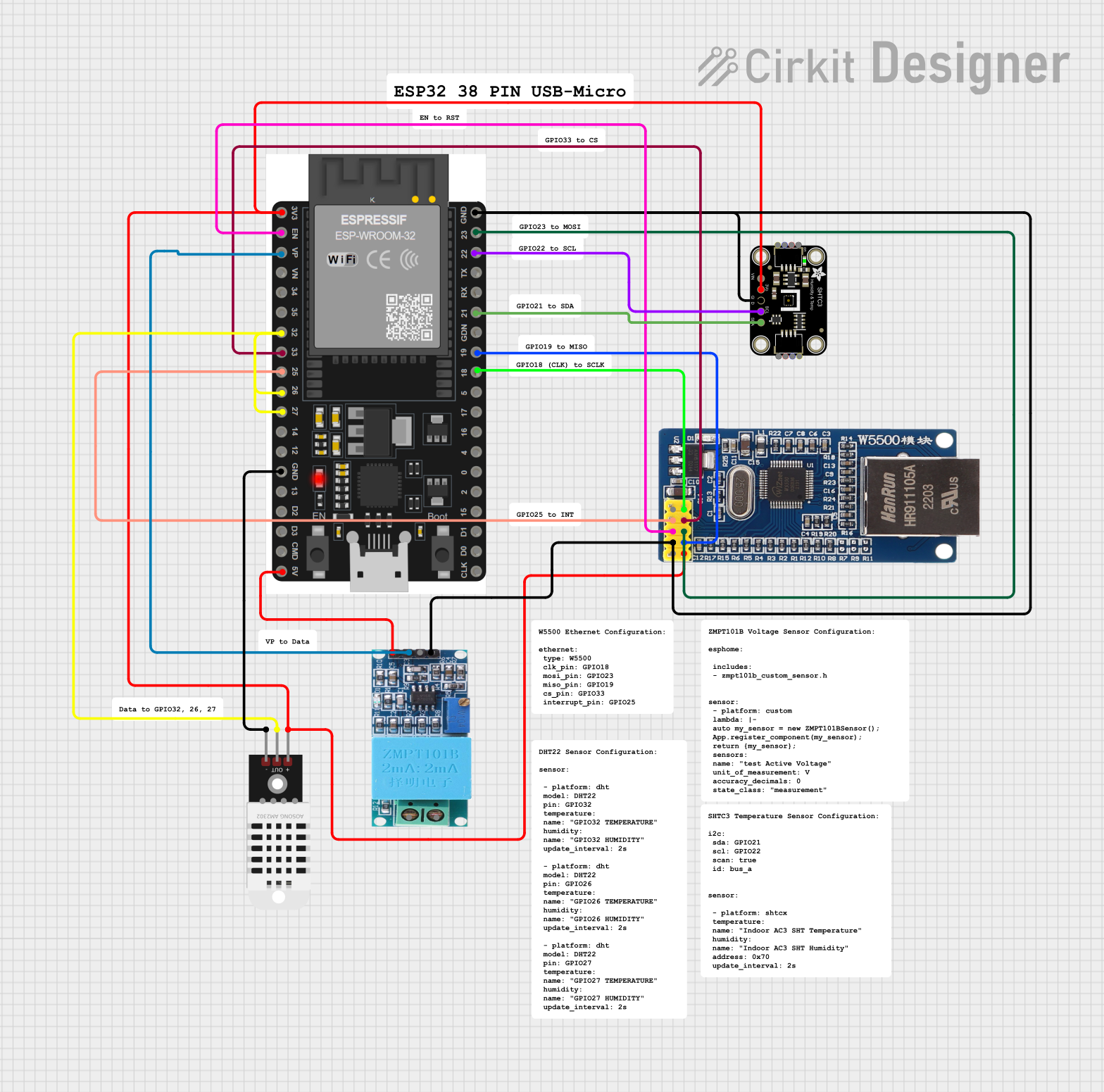
 Open Project in Cirkit Designer
Open Project in Cirkit Designer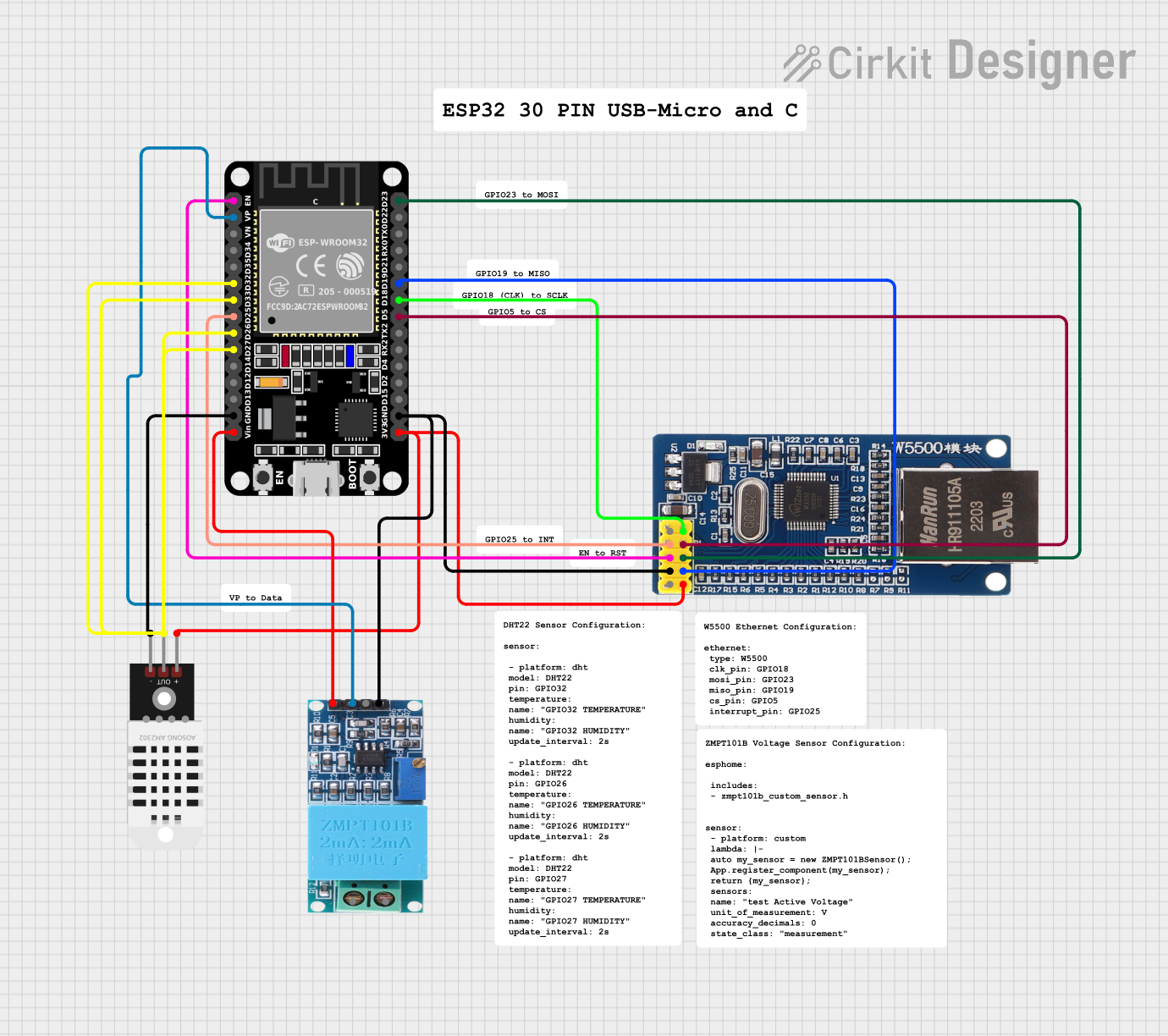
 Open Project in Cirkit Designer
Open Project in Cirkit DesignerExplore Projects Built with ZMPT101B

 Open Project in Cirkit Designer
Open Project in Cirkit Designer
 Open Project in Cirkit Designer
Open Project in Cirkit Designer
 Open Project in Cirkit Designer
Open Project in Cirkit Designer
 Open Project in Cirkit Designer
Open Project in Cirkit DesignerCommon Applications and Use Cases
- Power monitoring in residential, commercial, and industrial systems
- Energy management systems
- AC voltage measurement in IoT projects
- Electrical equipment testing and diagnostics
- Integration with microcontrollers for real-time voltage monitoring
Technical Specifications
The ZMPT101B module is designed to provide accurate AC voltage measurements with a simple interface. Below are its key technical specifications:
| Parameter | Value |
|---|---|
| Input Voltage Range | 0–250V AC (adjustable via potentiometer) |
| Output Voltage Range | 0–5V DC (proportional to input) |
| Operating Voltage | 5V DC |
| Accuracy | High precision |
| Isolation | Electrical isolation via transformer |
| Dimensions | 38mm x 25mm x 21mm |
Pin Configuration and Descriptions
The ZMPT101B module has a simple pinout for easy integration into circuits. Below is the pin configuration:
| Pin | Name | Description |
|---|---|---|
| 1 | VCC | Power supply input (5V DC) |
| 2 | GND | Ground connection |
| 3 | OUT | Analog output voltage proportional to the AC input |
Usage Instructions
The ZMPT101B module is straightforward to use in a circuit. Follow the steps below to integrate it into your project:
Step 1: Wiring the Module
- Connect the VCC pin to a 5V DC power supply.
- Connect the GND pin to the ground of your circuit.
- Connect the OUT pin to the analog input pin of your microcontroller (e.g., Arduino).
Step 2: Adjusting the Sensitivity
- Use the onboard potentiometer to adjust the sensitivity of the module. This allows you to calibrate the output voltage to match the input AC voltage range.
Step 3: Reading the Output
- The OUT pin provides an analog voltage proportional to the input AC voltage. You can read this value using an analog-to-digital converter (ADC) on your microcontroller.
Example: Using ZMPT101B with Arduino UNO
Below is an example code snippet for interfacing the ZMPT101B with an Arduino UNO to measure AC voltage:
// ZMPT101B Voltage Sensor Example with Arduino UNO
// Reads the analog output from the ZMPT101B and calculates the AC voltage
const int sensorPin = A0; // ZMPT101B OUT pin connected to Arduino A0
float calibrationFactor = 100.0; // Adjust based on your calibration
void setup() {
Serial.begin(9600); // Initialize serial communication
pinMode(sensorPin, INPUT); // Set sensor pin as input
}
void loop() {
int sensorValue = analogRead(sensorPin); // Read analog value from sensor
float voltage = (sensorValue / 1023.0) * 5.0; // Convert to voltage (0-5V)
// Calculate AC voltage using calibration factor
float acVoltage = voltage * calibrationFactor;
// Print the measured AC voltage to the Serial Monitor
Serial.print("AC Voltage: ");
Serial.print(acVoltage);
Serial.println(" V");
delay(1000); // Wait for 1 second before next reading
}
Important Considerations and Best Practices
- Calibration: The ZMPT101B requires calibration to ensure accurate voltage measurements. Adjust the potentiometer and calibration factor in your code accordingly.
- Isolation: The module provides electrical isolation, but ensure proper safety precautions when working with high-voltage AC circuits.
- Filtering: For more stable readings, consider adding a software filter or averaging multiple readings in your code.
Troubleshooting and FAQs
Common Issues and Solutions
No Output Voltage
- Ensure the module is powered with 5V DC.
- Verify all connections, especially the input AC voltage and the output pin.
Inaccurate Voltage Readings
- Adjust the onboard potentiometer for proper calibration.
- Check the calibration factor in your code and fine-tune it based on your setup.
Fluctuating Readings
- Add a software filter or average multiple readings to stabilize the output.
- Ensure the input AC voltage is stable and free from noise.
Arduino Not Detecting Output
- Verify that the OUT pin is connected to the correct analog input pin on the Arduino.
- Check the Arduino code for errors and ensure the ADC is functioning correctly.
FAQs
Q: Can the ZMPT101B measure DC voltage?
A: No, the ZMPT101B is designed specifically for AC voltage measurement. It is not suitable for DC voltage applications.
Q: What is the maximum AC voltage the module can measure?
A: The module can measure up to 250V AC, but this depends on the calibration and the input voltage range set via the potentiometer.
Q: How do I ensure safety when using the ZMPT101B?
A: Always follow proper safety precautions when working with high-voltage AC circuits. Ensure the module is properly isolated and avoid direct contact with live wires.
Q: Can I use the ZMPT101B with microcontrollers other than Arduino?
A: Yes, the ZMPT101B can be used with any microcontroller that has an analog-to-digital converter (ADC), such as ESP32, STM32, or Raspberry Pi (with an external ADC).